#the raft of the medusa
Text




How Fares the Raft of the Medusa?: Cannibalism, Mutiny, and the Portrayal of History
#the terror#terror camp#terror camp 2023#the raft of the medusa#how fares the raft of the medusa?#i took a bunch of screenshots for my presentation and it seemed a shame to delete them without using them at least once#so i thought i'd throw together a little preview for it#anyway if you want to find out what these screenshots have to do with the raft of the medusa#come check it out#image description in alt#watch this presentation alone forcing me to actually fucking post because i wanted to use my screenshots
22 notes
·
View notes
Photo

The Raft of the Medusa by Théodore Géricault -1818
29 notes
·
View notes
Text

SCENE DE NAUFRAGE 2023
This has nothing to do with anything. I just thought this image of US Navy personnel retrieving wreckage of the Chinese spy balloon was incredibly painterly and worth saving for future reference.
It reminds me a little of Théodore Géricault's "Scène de Naufrage" (aka "The Raft of the Medusa").

Source:
Live updates: Suspected Chinese spy balloon latest (cnn.com)
64 notes
·
View notes
Text

Dmitri Kessel - The raft of the medusa, Louvre. Time & Life Pictures Shutterstock
11 notes
·
View notes
Text
''As the artist’s personal life fell apart, Géricault threw himself into his research with a romantic intensity.
He rented a remote studio and cut himself off from his friends. He tracked down survivors and interviewed them, sketching their portraits and even letting several of the men live with him as they tried to reenter society and deal with the aftershocks of their experience. He went to hospitals to study the dying and the morgue to study the dead. The Beaujon Hospital even allowed him to bring severed body parts home with him—many morgues had a borrowing system like libraries for artists—and he painted them from different angles and at different degrees of rot. When he learned the Medusa’s carpenter had survived the wreck, he commissioned the man to build a replica of the raft in his studio on which he posed his friends (like the promising young painter Eugène Delacroix) as live models. He took another model of the raft out to sea himself to study how it maneuvered on the water. He may have been driven into this frenzy of research by heartbreak and personal circumstance, but his end result is a masterpiece in no small part because of his meticulous planning and inventive research. This scandalous and horrific event with profound repercussions had overtaken Paris, and he had to organize all its facets to fit on a canvas.''
-Amy E. Herman, Fixed
#Amy E. Herman#Fixed#Théodore Géricault#The Raft of the Medusa#go to the museums to see real arts instead of wasting time browsing midjourney craps
6 notes
·
View notes
Text

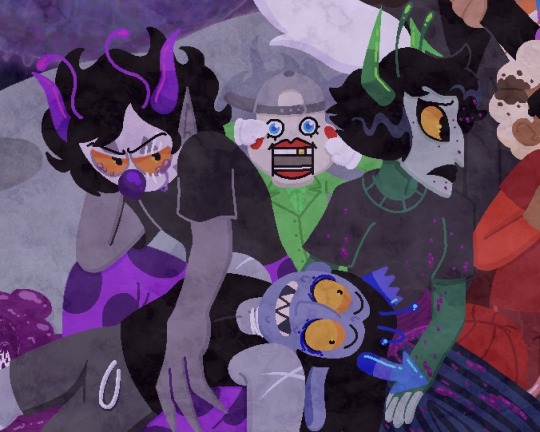



the raft of the makara (draw time: 40 hours)
[ID: The trolls and kids on the meteor, with dream bubbles beyond them in space. On the left side is Gamzee, mourning Equius' corpse, and an Eridan, split in half, who is being mourned by Kanaya. Lil Cal is behind them. In the bottom right is a dead Feferi. In the center on the floor, Dave, Rose, and Aradia reach towards Sollux, who holds up a Karkat who is waving for help. Below him, Terezi leans and also waves for help. Grabbing on to her is Vriska, with Nepeta's corpse over the top of her. Behind the group, John, Jade, and Davesprite look on and point in a panic. //end ID.]
#the raft of the medusa#fanart#homestuck#homestuck fanart#homestuck art#hs#my art#gamzee makara#john egbert#rose lalonde#dave strider#jade harley#davesprite#eridan ampora#tw death#tw blood#murderstuck#feferi peixes#equius zahhak#kanaya maryam#aradia megido#nepeta leijon#vriska serket#terezi pyrope#karkat vantas#sollux captor#lil cal#tw lil cal
103 notes
·
View notes
Text
i spend so much time thinking about how theodore gericault's research for the raft of the medusa included him going to the mourge, observing corpses and even taking some parts (arms, legs, fully decapitated heads) home to watch them decay as he drew
#theodore gericault#the raft of the medusa#he's SOO INSANE???#love him for it#he created THAT masterpiece so#what's one or two decayed limb ehh??
10 notes
·
View notes
Text

llustration from Le Petit Journal of 'Raft of the Medusa', 1899.
More >> 1 | 2 | 3
4 notes
·
View notes
Photo
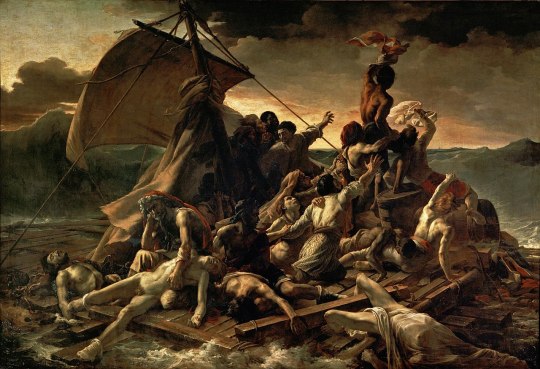
12 notes
·
View notes
Text
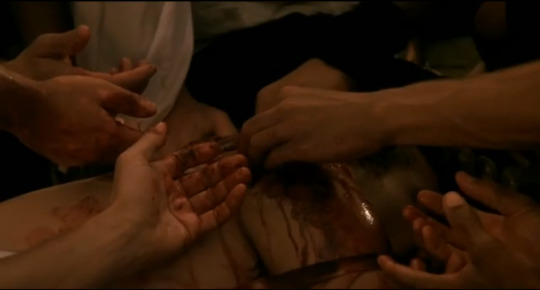
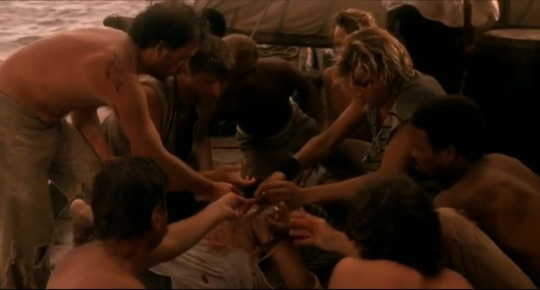
Le radeau de la méduse (1998), dir. Iradj Azimi
#this movie was honestly terrible#from the acting to the voiceover to the grandiloquent music to the appalling female characters to the lack of any nuance#but at least some of the scenes were visually appealing#raft of the medusa#the raft of the medusa#shipwreck#naval history#cannibalism#survival cannibalism#french cinema#iradj azimi#boat media#age of sail
3 notes
·
View notes
Text

Announcement!
If you saw my Terror Camp presentation analyzing The Raft of the Medusa and The Terror, I'm going to be recording a full version in the new year! There's a lot to expand on, and if you were interested in the discussion (i'll also be working on a full essay for History as a Panopticon), keep an eye on this blog for updates.
12 notes
·
View notes
Text
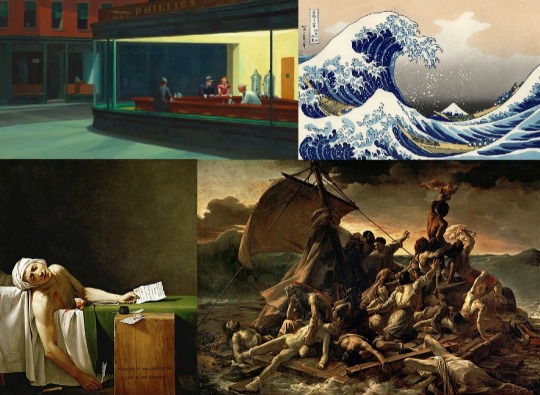
this are my favorites pieces of art. i could stare at them for hours
#nighthawks#edward hopper#the great wave off kanagawa#katsushika hokusai#the death of marat#jacques louis david#the raft of the medusa#theodore gericault#paintings#art#if you read this go watch my blog#radiobrais
5 notes
·
View notes
Text


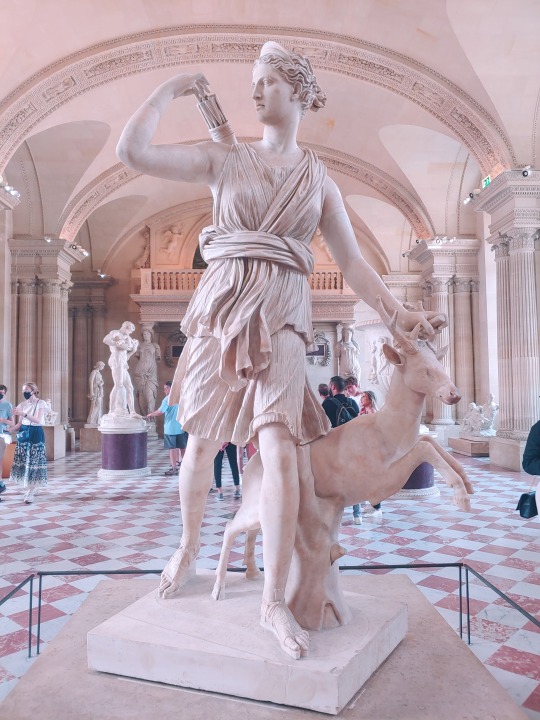



June 26th, 2023
Today was a great first day in Paris! After a restful night's sleep, I woke up re-energized and ready to go!
First, we went to Père Lachaise Cemetery and visited many famous people like Jim Morrison, Oscar Wilde, Proust, and more! It was very peaceful and serene. Père Lachaise Cemetery is the most famous and visited necropolis in all of Paris and many people would like to be buried there. A family has to pay to keep their loved one's tombstone up or else it will be removed - there are some that will never be removed, they have a special symbol on their graves to let people know that they are not moving! You can, however, have your ashes spread in the cemetery.
Afterwards, we got sandwiches and pastries from a little boulangerie and ate in a nearby park. The food was delicious! Then it was on to the Louvre!
The Louvre was splendid! Absolutely marvelous!! The Louvre is completely interconnected but is split into 3 different sections and they each have their own entrance to make it easier for people. The Louvre also has the main entrance from the pyramids, an entrance from the underground mall and metro station and at least one entrance from the back (which, go to that one! It was completely empty and had no line!) Our professor took us to the main sites - La Joconde (The Mona Lisa), Le Radeau de la Méduse (The Raft of the Medusa), La Liberté guidant le peuple (Liberty Leading the People), and more! Our professor told us of some other noteworthy art and artifacts and said that even if you spent 30 seconds in front of each piece in the Louvre, it would still take you like a year to see everything! It's that big and holds that much!! A friend and I proceeded to close the Louvre (we stayed in there for like 5 hours!), our professor was impressed - no one did that before.
My friend and I proceeded to grab a quick bite for dinner, and we ate in the Louvre Gardens - a beautiful spot of greenery in Paris. Afterwards, we went back to the hotel to rest up before heading back out to see la tour Eiffel! We met up with some of our classmates and sat in front of the Eiffel Tower as the sun set and watched it light up! We even saw the Eiffel Tower do it's little light show, it was fantastic! Beautiful! Marvelous!
It was a great first day!
#france#french#paris#eiffel tower#cemetary#oscar wilde#proust#jim morrison#louvre#mona lisa#la joconde#fun#travel#student#studyabroad#liberty leading the people#the raft of the medusa#eiffel tower at night#eiffel tower lights#city of light
5 notes
·
View notes
Text
1816-French frigate Méduse shipwrecks

The French frigate Méduse strikes the Bank of Arguin and 151 people on board have to be evacuated on an improvised raft, a case immortalised by Géricault's painting The Raft of the Medusa.


In 1816, following the Bourbon Restoration, Méduse was armed en flûte to ferry French officials to the port of Saint-Louis, in Senegal, to formally re-establish French occupation of the colony under the terms of the First Peace of Paris. Through inept navigation by her captain, Hugues Duroy de Chaumareys, who had been given command after the Bourbon Restoration for political reasons and even though he had hardly sailed in 20 years, Méduse struck the Bank of Arguin off the coast of present-day Mauritania and became a total loss.

Most of the 400 passengers on board evacuated, with 146 men and 1 woman forced to take refuge on an improvised raft towed by the frigate's launches. The towing proved impractical, however, and the boats soon abandoned the raft and its passengers in the open ocean. Without any means of navigating to shore, the situation aboard the raft rapidly turned disastrous. Dozens were washed into the sea by a storm, while others, drunk from wine, rebelled and were killed by officers. When supplies ran low, several of the injured were thrown into the sea, and some of the survivors resorted to the Custom of the Sea, engaging in cannibalism. After 13 days at sea, the raft was discovered with only 15 people still alive.[1]

News of the tragedy stirred considerable public emotion, making Méduse one of the most infamous shipwrecks of the Age of Sail. Two survivors, a surgeon and an officer, wrote a widely read book about the incident, and the episode was immortalised when Théodore Géricault painted The Raft of the Medusa, which became a notable artwork of French Romanticism.

2 notes
·
View notes
Text
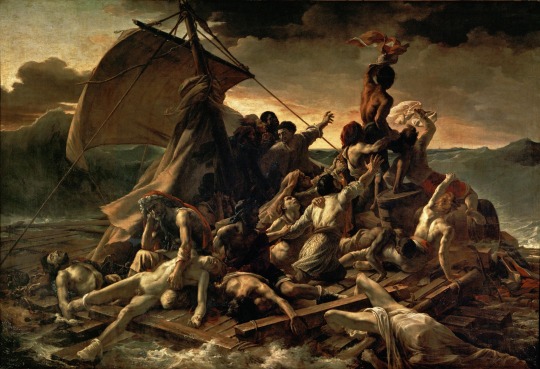
Le Radeau de la Méduse, 1819, Oil on canvas, 491x716 cm, Paris, musèe du Louvre
Theodore Gèricault was a french painter, from the Romanticism movement.
From a wealthy family, in 1798 he moved to Paris where he attended the atelier of Vernet and then Guèrin, but his training and stile was heavily influenced by Gros and the study at the Louvre of Flemish, XVIII century Dutch and Venetian painting. In 1816 he traveled to Italy, where the study of the works of Raphael, Michelangelo and caravaggio greatly influenced his mature style.
Back in Paris after the italian grand tour he met Delacoix. One of his last travel was in Englan, in 1821, where he learned about the free, non academic painting of Constable and Lawrence. With this knowledge he contributed to the overcoming of the academic tradition in France.
In addiction to his production of studies, painting and lithographs, he modeled some interesting figures in wax.
The painting: Le Radeau de la Mèduse
Painted in 1818, was presented at the salon in 1819, a controversy painting, for the fusion made with romantic dramatic intensity between classical composition and dynamic rapresentation of reality.
The subject of the painting was a rather dramatic event in the history of the french navy. In 1816 the Meduse, a frigate, set sail from the cost of France to reach Senegal. Arriving in sight of Cap Blanc, the inexperience of the captain prevented the recognition of a infamous, but rather known sandy bank off the coast of Mauritania. So the ship tilted to one side, the captain and all the equip tried to save the ship, but every attempt failed. The only thing remained to do was to abandon the ship and reach the cost of mauritania. With only 6 lifeboats they had to set up a makeshift raft. On it boarden 149 man and 1 woman. It's a dark story what happen next, fights boke out, there were suicides, murders, desperation and cannibalism. After 13 days adrift finally what remained of the draft was spotted, of the 150 people, only 15 were found alive, wich five of them died during the night of the rescue.
In 1817 two survivors wrote a book telling what happened during those 13 days in the ocean.
And here it's were we start talking about the painting.
Gericault decided to paint all the shades of physical pain, moral anguish in the mass of people on the raft, from the father in foregroud, intoxicated by the pain of losing his son, to the men who are trying to make themself more visible to the ship in the backgorund. The gugantic dimensions and the epic style were finally used to rapresent the sufference of normal people. The scene is a romantic metaphore of human life, in perpetual struggle with adversity and destiny divided between despair and hope, life and death.
The scene is constructed onto diagonal lines with two arriving ponts, one is the raft shaft, the other the shirt blowing in the wind. Theres a muvement, a vertical tension to the horizont. The wind blow in the opposite direction, moving the raft away from salvation. The red accents of the light onto varius object make the drammatic scene more dramatic.
The painting is romantic in his intent and subject, but his form is classic, the drawings define the bodies, the chiaroscuro define the dinamic. The bodies are like heroes and atlethes, organaized in a piramid structure, at the point of the pyramid theres a body that remainds of the belvedere torso, an antient statue very known during the neoclassicism period.
When i was 13 i read about this event, without realizing it, one of my favorite book is Ocean sea by Alessandro baricco, an italian wrtiter, who described what happened on the raft in the middle of the book. Five years forward i was studing art and i came across this bauty, and i hiperfixated on it (as one does) and now the book, wich already was one of my favorite just made more sense.
#meduse#art academia#dark academia#art#art history#light academia#painting#academia#chaotic academia#classic academia#theodore gericault#the raft of the meduse#the raft of the Medusa
17 notes
·
View notes
